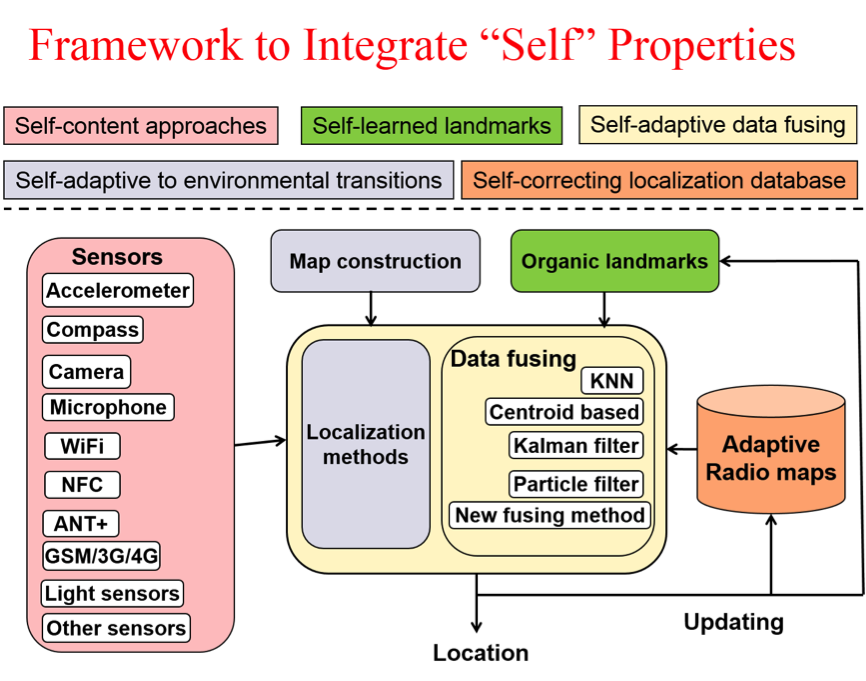Self-Localization: Design and Development of Self-Content Positioning Techniques
PI: Prof. Yu-Chee Tseng, National Chiao Tung University Co-PI: Prof. Pai H. Chou, National Tsing Hua University
Champion: Dr. Sharon Xue Yang Co-Champion: Dr. Shao-wen, Yang
Self-localization studies how to exploit the ambient infrastructures including buildings, stairs, WiFi, M2M, NFC, landmarks, etc. to conduct localization automatically. In this project, we plan to develop a self-localization system with three unique properties, infrastructure-free, self-content, and self-adaptive properties, to support diverse applications that may require different levels of localization accuracy. Developing such a self-localization system to localize users while they move across various indoor/outdoor spaces will involve several research challenges. We will exploit the three unique "self" properties to develop our system that consists of 5 "self" localization technologies (“5 S” in short) and some embedded M2M landmarks incorporated. First, we consider "self-content approaches" (the 1st S) with little dependency on newly-built infrastructures. Any infrastructure, if used, should not be designed for the localization purpose. Second, the system will be able to find out "self-learned landmarks" (the 2nd S) in the environment. The self-learning property emphasizes that no prior costly training/calibration processes are needed to build landmarks and maintain RSSI fingerprints. Third, we will design "self-adaptive sensor data fusion" (the 3rd S) so that the localization will be able to provide multiple data fusion approaches adaptively in support of multi-data analysis and multi-resolution localization for improving accuracy. Low-accuracy data will be considered to compensate for the lack of high-accuracy data. Moreover, sensor data will be used not only for the localization purpose, but also for choosing the best data fusion techniques in a dynamic and self-weighted manner. Fourth, the developed system will be "self-adaptive to environmental transitions" (the "4th S"). The system will be able to detect the environmental transition in-between two spaces including Indoor-outdoor, floor-to-floor transition, and room-to-room transitions. Fifth, we will design "self-correcting localization database" (the 5th S). With multiple types of data sources can contribute diverse information to enrich location databases, the localization system will be able to select the best database to reduce localization errors based on the temporal/spatial data correlation and some unique features. Finally, some embedded M2M landmarks that can be embedded in a variety of forms, including optical, RF, and magnetic, are also incorporated with the "5 S" system to facilitate localization.

Members








